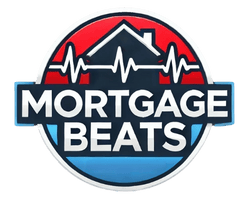Understanding Home Equity Financing
Home equity financing allows homeowners to borrow against the value they’ve built in their property. As you pay down your mortgage or as your home appreciates, the difference between your home’s current market value and your remaining mortgage balance becomes equity. This equity can be accessed through loans or credit lines, providing funds for major expenses like home improvements, debt consolidation, or investments.
Not all homeowners realize how much equity they’ve accumulated over time. Many are surprised to find they qualify for substantial financing options. Lenders typically allow borrowers to access up to 80-90% of their home’s equity, depending on creditworthiness and loan terms. This makes home equity one of the most powerful financial tools available to property owners.
Before deciding between a cash-out refinance and a HELOC, it’s important to evaluate your financial goals. Do you need a lump sum upfront, or would you prefer flexible access to funds over time? Understanding these distinctions will help you make the right choice—and consulting with mortgage experts like those at NorCal Real Estate & Financial Service can provide clarity on the best path forward.
What Is a Cash-Out Refinance?
A cash-out refinance is a mortgage refinancing option where homeowners replace their existing loan with a new, larger mortgage and receive the difference in cash. Unlike a traditional refinance, which simply adjusts the loan terms, a cash-out refinance allows borrowers to tap into their home’s equity while potentially securing a better interest rate.
This option is particularly useful for homeowners who need a significant amount of money at once. Common uses include major home renovations, paying off high-interest debt, or funding large expenses like education or medical bills. Because the funds come as a lump sum, borrowers have immediate access to the full amount, making it a structured and predictable financing method.
One key advantage of a cash-out refinance is that it consolidates debt into a single mortgage payment, often at a lower interest rate than credit cards or personal loans. However, it does reset the mortgage term, which means borrowers may end up paying interest for a longer period. Working with a knowledgeable lender like NorCal Real Estate & Financial Service ensures you get the best terms tailored to your financial situation.
How a Cash-Out Refinance Works
The process begins with determining how much equity you have in your home. Lenders typically require an appraisal to confirm the current market value. Once approved, the new mortgage pays off the existing loan, and the remaining funds are disbursed to the borrower in cash.
Closing costs are a factor to consider, as refinancing usually involves fees similar to those of an original mortgage. These may include appraisal fees, title insurance, and origination charges. However, some lenders offer no-closing-cost refinances, where fees are rolled into the loan balance instead of being paid upfront.
The interest rate on a cash-out refinance is based on current market conditions and the borrower’s credit profile. Since mortgage rates are typically lower than other forms of credit, this can be a cost-effective way to access funds. NorCal Real Estate & Financial Service specializes in helping homeowners navigate this process smoothly, ensuring they secure the most favorable terms available.
Pros of Cash-Out Refinancing
One of the biggest advantages of a cash-out refinance is the potential to secure a lower interest rate than your original mortgage. If market rates have dropped since you first took out your loan, refinancing can reduce your monthly payments while also providing cash for other needs.
Another benefit is the simplicity of a lump-sum payment. Unlike a HELOC, where you draw funds as needed, a cash-out refinance gives you immediate access to the full amount. This is ideal for large, one-time expenses where having all the money upfront is necessary.
Additionally, the interest on a cash-out refinance may be tax-deductible if the funds are used for home improvements. This can provide further financial benefits, making it a smart choice for homeowners looking to invest in their property. With the guidance of NorCal Real Estate & Financial Service, borrowers can maximize these advantages while minimizing risks.
Cons of Cash-Out Refinancing
One downside is that a cash-out refinance resets your mortgage term. If you’ve been paying down your loan for years, refinancing could extend your repayment period, resulting in more interest paid over time.
Closing costs can also be a drawback, as they typically range from 2% to 5% of the loan amount. While some lenders offer no-closing-cost options, these often come with slightly higher interest rates to compensate.
Lastly, because a cash-out refinance increases your mortgage balance, it reduces your home equity. If property values decline, you could end up owing more than your home is worth. Consulting with NorCal Real Estate & Financial Service helps ensure you make an informed decision that aligns with your long-term financial health.
What Is a HELOC?
A Home Equity Line of Credit (HELOC) is a revolving credit line secured by your home’s equity. Unlike a cash-out refinance, a HELOC allows you to borrow funds as needed, up to a predetermined limit, during a “draw period” (usually 5-10 years).
This flexibility makes HELOCs ideal for ongoing expenses like home renovations, education costs, or emergency funds. During the draw period, you only pay interest on the amount you’ve borrowed, making it a cost-effective option for those who don’t need a lump sum upfront.
After the draw period ends, the HELOC enters the repayment phase, where you must pay back the principal plus interest. Because of its revolving nature, a HELOC requires disciplined financial management to avoid overborrowing. NorCal Real Estate & Financial Service can help structure a HELOC that fits your spending habits and repayment capacity.
How a HELOC Works
HELOCs function similarly to credit cards but with much lower interest rates since they’re secured by your home. Once approved, you can access funds via checks, transfers, or a linked debit card. Interest rates are usually variable, meaning payments can fluctuate over time.
During the draw period, minimum payments may be interest-only, keeping initial costs low. However, once repayment begins, monthly payments increase significantly as you start paying down the principal.
Lenders determine your credit limit based on your home’s equity, credit score, and debt-to-income ratio. NorCal Real Estate & Financial Service helps clients secure HELOCs with competitive rates and flexible terms, ensuring they can manage repayments comfortably.
Pros of a HELOC
The biggest advantage of a HELOC is flexibility. You only borrow what you need, when you need it, which can save money on interest compared to a lump-sum loan.
HELOCs also tend to have lower upfront costs than cash-out refinances. While there may be appraisal and application fees, they’re generally less expensive than full mortgage refinancing costs.
Additionally, HELOCs provide a financial safety net. If unexpected expenses arise, having an open line of credit can be a lifesaver. With NorCal Real Estate & Financial Service, homeowners can secure HELOCs with favorable terms, ensuring they have access to funds without unnecessary financial strain.
Cons of a HELOC
A major drawback is the variable interest rate, which can lead to unpredictable monthly payments if market rates rise. This makes budgeting more challenging compared to a fixed-rate cash-out refinance.
Another risk is the temptation to overspend. Because funds are easily accessible, some borrowers may accumulate more debt than they can comfortably repay.
Finally, failing to repay a HELOC can result in foreclosure, as your home serves as collateral. Working with a trusted advisor like NorCal Real Estate & Financial Service ensures you borrow responsibly and avoid financial pitfalls.
Choosing Between a Cash-Out Refinance and HELOC
The right choice depends on your financial needs and discipline. If you want a fixed rate, lower payments, and a lump sum, a cash-out refinance may be better. If you prefer flexibility and only need occasional access to funds, a HELOC could be ideal.
Consider factors like interest rates, loan terms, and how you plan to use the funds. A detailed financial assessment can help determine which option aligns with your goals.
For personalized guidance, NorCal Real Estate & Financial Service offers expert advice to help homeowners make the best decision. Their mortgage specialists analyze your unique situation to recommend the most advantageous solution.
Conclusion
Both cash-out refinances and HELOCs provide valuable ways to access home equity, but they serve different purposes. A cash-out refinance offers stability with a lump sum and fixed rates, while a HELOC provides flexible borrowing power.
Before making a decision, evaluate your financial objectives, repayment ability, and risk tolerance. Consulting with professionals like those at NorCal Real Estate & Financial Service ensures you choose the option that best supports your long-term financial health.
No matter which route you take, leveraging home equity wisely can help you achieve your financial goals whether it’s renovating your home, consolidating debt, or preparing for future expenses. With the right strategy, you can make your home’s equity work for you.
Ready To Get The Best Financial Advise, Email us at: Chris@mortgagebeats.com



